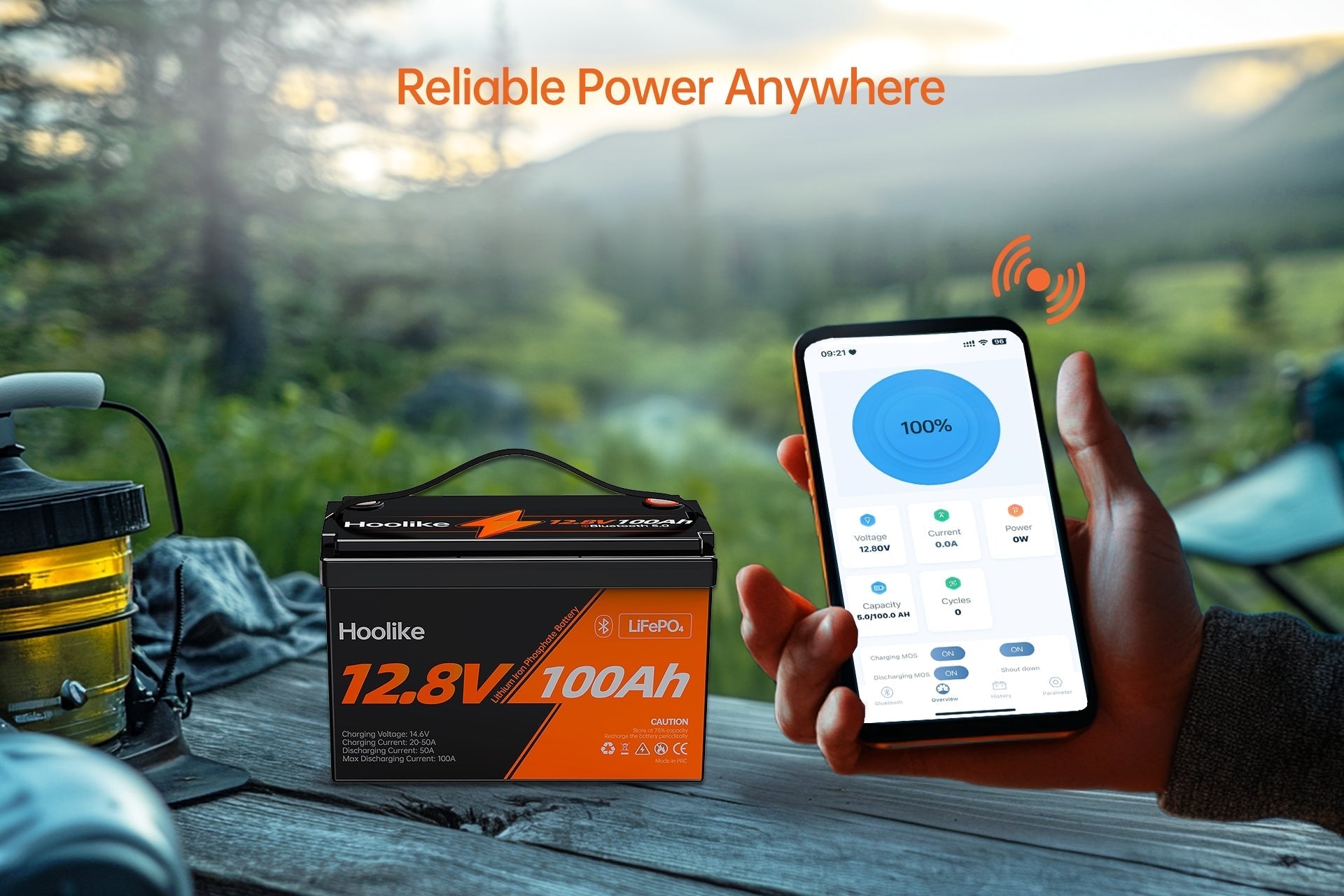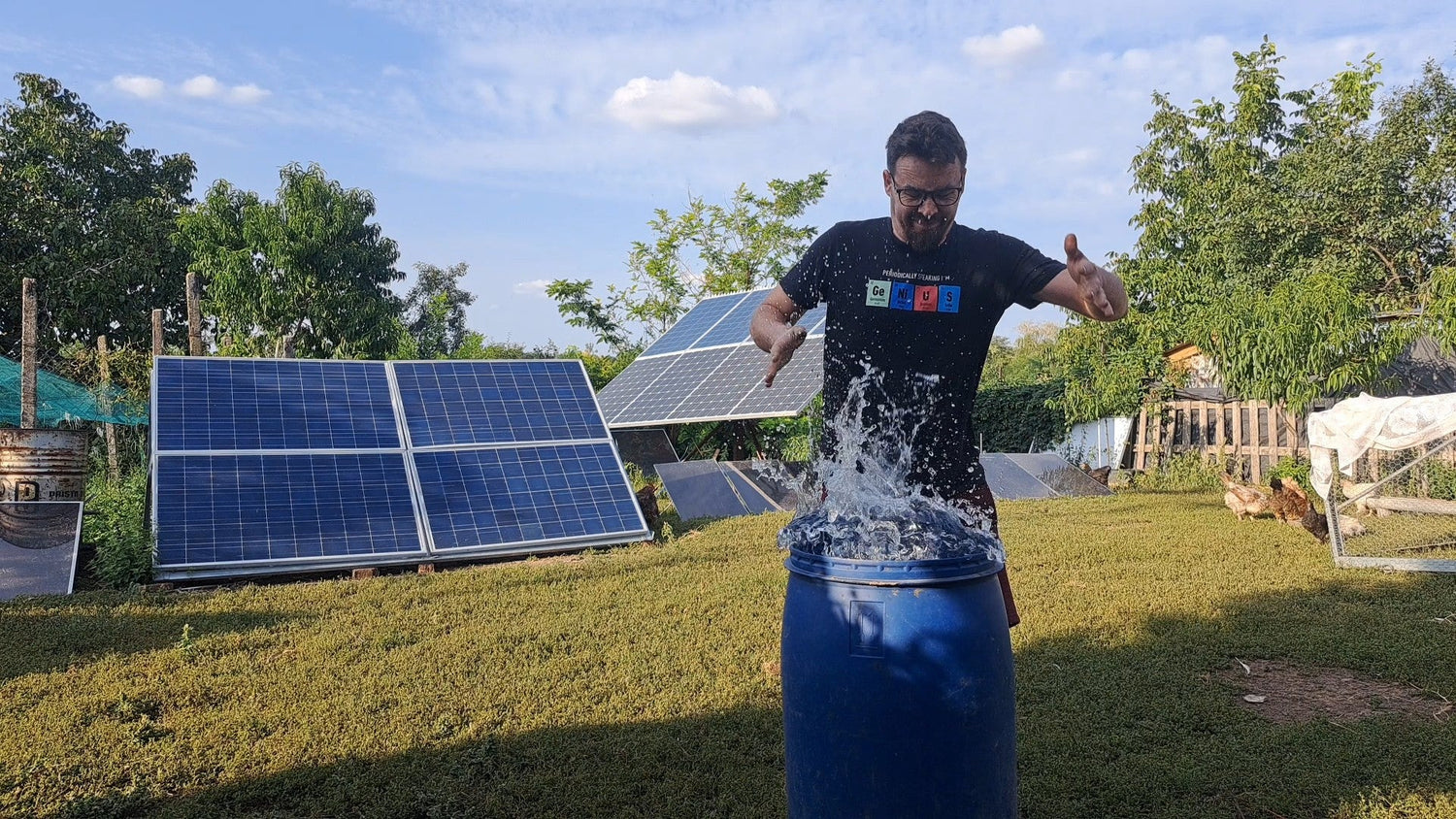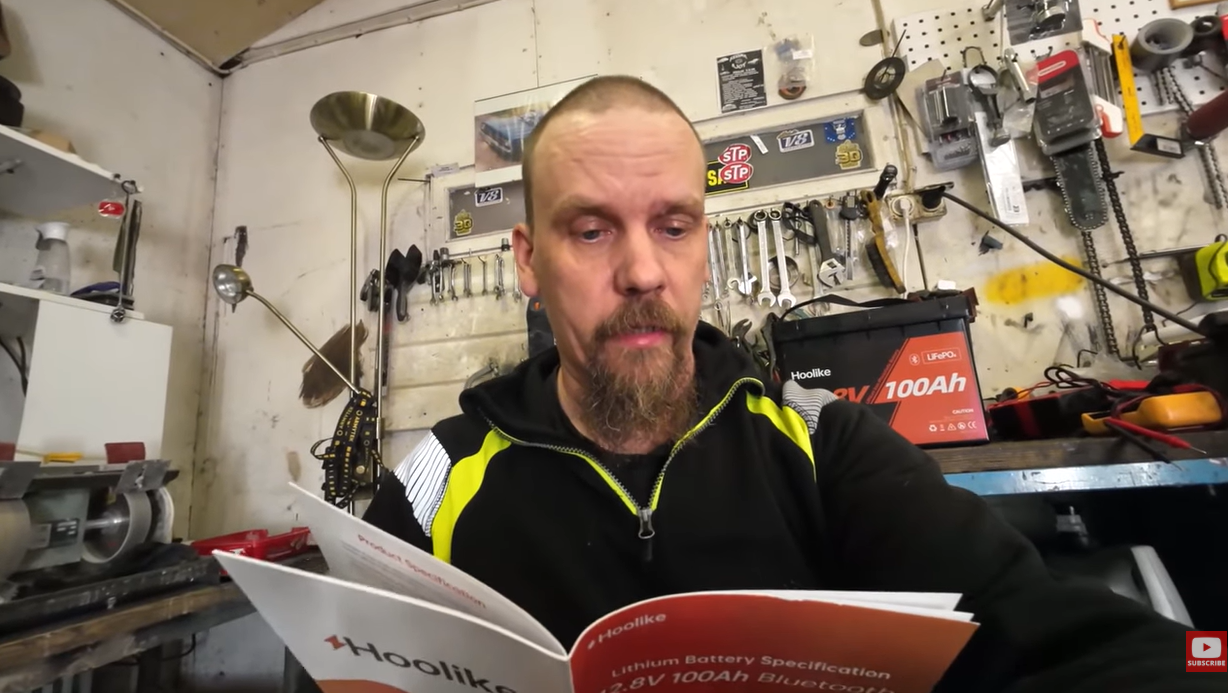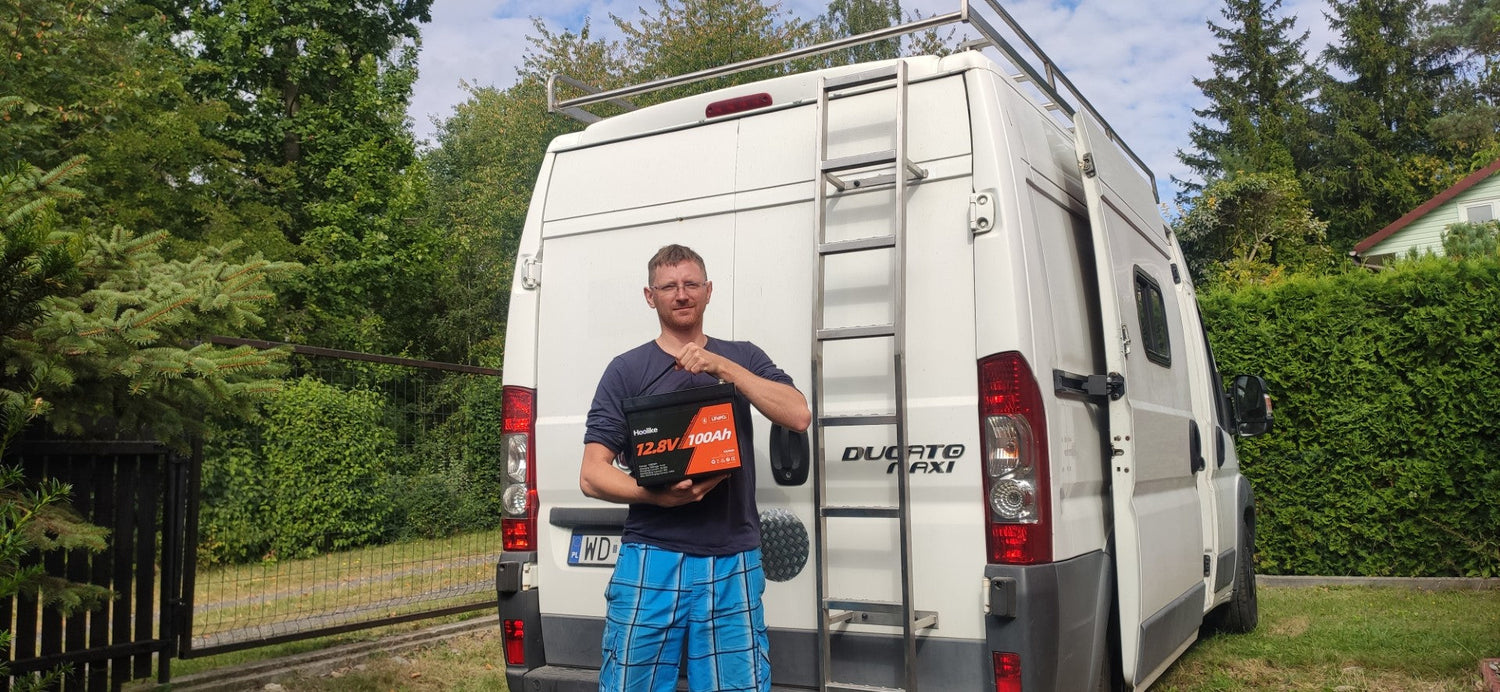Introduction
As renewable energy systems continue to grow, battery storage solutions play a critical role in ensuring efficiency and stability. Among the various battery technologies, Lithium Iron Phosphate (LiFePO4) batteries have gained attention for their safety, durability, and environmental benefits. However, other chemistries such as Lithium-ion (Li-ion), Lead-Acid, Nickel-Cadmium (NiCd), and Sodium-ion batteries also contribute to the renewable energy landscape. This blog provides a comparative analysis of LiFePO4 batteries against these alternative chemistries, evaluating their efficiency, lifespan, cost, environmental impact, and overall suitability for renewable energy applications.
For those seeking high-quality LiFePO4 batteries, visit Hoolike, a trusted brand specializing in durable and efficient battery solutions for renewable energy applications.

1. Energy Efficiency and Performance
Hoolike LiFePO4 Batteries provide outstanding energy efficiency, achieving a remarkable 90 to 98 percent efficiency with minimal energy loss. Their stable discharge rate makes them an excellent choice for solar and wind energy storage, ensuring a consistent power supply even during fluctuating energy generation. These batteries also offer high power output with steady voltage levels, making them ideal for both residential and commercial applications. The Hoolike 12.8V 100Ah LiFePO4 Battery is an exceptional example, offering long-lasting reliability and efficient energy storage for various renewable energy systems. Similarly, the Hoolike 12.8V 100Ah Bluetooth-Enabled LiFePO4 Battery enhances monitoring capabilities, allowing users to track battery performance remotely for optimized usage. For high-capacity applications, the Hoolike 25.6V 100Ah LiFePO4 Battery delivers excellent scalability, making it a robust choice for commercial and industrial energy storage needs.
Lithium-ion (Li-ion) Batteries, while known for their high energy density, can suffer from efficiency losses due to thermal management challenges. These batteries have a higher risk of overheating and thermal runaway compared to Hoolike LiFePO4 batteries, making safety a critical concern. However, they remain suitable for grid-scale and commercial energy storage applications due to their ability to store large amounts of energy efficiently. Despite their advantages, their shorter lifespan and safety risks make LiFePO4 batteries a more reliable alternative for sustainable energy solutions.
Lead-Acid Batteries have lower efficiency, typically ranging between 70 to 85 percent, due to their higher internal resistance and greater energy losses. These batteries also suffer from poor depth of discharge, requiring frequent recharging and making them less suitable for long-term applications. Commonly used in off-grid solar setups, lead-acid batteries require significant maintenance, increasing operational costs over time. Compared to Hoolike LiFePO4 batteries, lead-acid technology is outdated, offering limited cycle life and efficiency, making it less viable for modern renewable energy applications.
Nickel-Cadmium (NiCd) Batteries offer moderate efficiency between 60 to 80 percent and demonstrate robust performance in extreme temperature conditions. However, they suffer from the memory effect, which reduces their usable capacity over time, making them less efficient for long-term energy storage. One of their advantages is their high tolerance for deep discharge cycles, but their environmental impact due to toxic cadmium content raises concerns regarding their sustainability. Given the advancements in LiFePO4 technology, NiCd batteries are becoming a less preferred choice for renewable energy storage.
Sodium-ion Batteries are an emerging technology with moderate energy density, offering a potentially more sustainable and cost-effective option for renewable energy storage. They are projected to have a higher cycle life compared to lead-acid batteries, making them a promising alternative. However, they are still under development for large-scale use and have yet to achieve the widespread adoption seen with LiFePO4 batteries. While sodium-ion batteries hold potential, Hoolike LiFePO4 batteries remain the superior choice for current applications due to their proven performance, safety, and longevity in solar and wind energy storage systems.
2. Lifespan and Cycle Durability
Hoolike LiFePO4 batteries offer an exceptionally long lifespan, capable of enduring 3,000 to 7,000 charge cycles. This extended cycle life significantly reduces the need for frequent replacements, making them a cost-effective and sustainable choice for energy storage. Whether used in residential solar setups or large-scale commercial applications, they maintain their capacity over an extended period, ensuring reliable energy storage. The Hoolike 12.8V 100Ah LiFePO4 Battery is an excellent example of a long-lasting battery, designed to support demanding energy needs with efficiency. Additionally, the Hoolike 12.8V 100Ah Bluetooth-Enabled LiFePO4 Battery allows users to monitor battery performance remotely, ensuring optimal longevity and reliability. For even greater energy capacity, the Hoolike 25.6V 100Ah LiFePO4 Battery is an ideal solution for commercial and industrial energy storage systems.
Lithium-ion batteries, although widely used, generally have a shorter lifespan than Hoolike LiFePO4 batteries, typically lasting between 500 to 2,000 cycles. Their longevity is affected by high temperatures and deep discharge cycles, which accelerate degradation over time. While they offer high energy density, their shorter life expectancy and vulnerability to performance decline make them a less durable choice for long-term renewable energy storage.
Lead-Acid batteries have a limited cycle life, ranging between 500 to 1,500 cycles. These batteries require frequent maintenance, and if not properly charged, they suffer from sulfation, which leads to premature failure. Although they are commonly used in off-grid applications, their relatively short lifespan and high maintenance requirements make them less practical for long-term sustainability when compared to LiFePO4 alternatives.
Nickel-Cadmium (NiCd) batteries offer a longer cycle life than lead-acid options, typically lasting between 1,500 to 3,000 cycles. They are highly resilient in demanding environments and can withstand extreme temperatures. However, their use is hindered by concerns over cadmium toxicity, making them less environmentally friendly compared to newer battery technologies. Their durability is commendable, but sustainability concerns limit their widespread adoption.
Sodium-ion batteries are an emerging energy storage technology with an expected lifespan of 2,000 to 3,500 cycles. While they offer promise for large-scale stationary storage, they are still in early-stage development and are not yet widely available for commercial use. Although sodium-ion batteries could become a cost-effective and sustainable alternative in the future, Hoolike LiFePO4 batteries remain the superior choice for current energy storage needs due to their proven durability, efficiency, and long lifespan.

3. Cost Considerations
Hoolike LiFePO4 batteries require a higher initial investment but offer a lower lifetime cost due to their exceptional durability and minimal maintenance requirements. These batteries are designed to last significantly longer than traditional alternatives, reducing replacement costs and ensuring sustained performance over time. With reliable efficiency and a strong return on investment, Hoolike LiFePO4 batteries are an excellent choice for those looking for long-term energy storage solutions. The Hoolike 12.8V 100Ah LiFePO4 Battery provides a cost-effective solution for residential and commercial applications, while the Hoolike 12.8V 100Ah Bluetooth-Enabled LiFePO4 Battery enhances cost efficiency by allowing real-time monitoring and optimizing battery performance, minimizing unnecessary expenses.
In comparison, lithium-ion batteries also come with a high upfront cost, especially in systems that require extensive cooling and management to prevent overheating and degradation. While they provide high energy density, their maintenance, and shorter lifespan make them less economical than LiFePO4 in the long run. Lead-acid batteries, on the other hand, have a lower initial cost but become significantly more expensive over time due to their shorter lifespan and frequent replacement needs. Their maintenance costs and inefficiencies further add to the long-term financial burden, making them a less favorable choice for those seeking sustainable and cost-effective energy solutions.
Other alternatives include nickel-cadmium (NiCd) batteries, which are moderately expensive due to high material costs and the environmental concerns surrounding their disposal. Sodium-ion batteries, though expected to be a cost-effective alternative, are still in the early stages of development for commercial use. These newer technologies show promise but have yet to match the proven reliability and economic efficiency of Hoolike LiFePO4 batteries. For those needing high-capacity and scalable energy storage, the Hoolike 25.6V 100Ah LiFePO4 Battery offers an industry-leading balance of cost, performance, and longevity, making it a top-tier investment for large-scale energy storage applications.
4. Environmental Impact
Hoolike LiFePO4 batteries are an environmentally friendly energy storage solution, utilizing non-toxic and fully recyclable materials. Unlike other battery chemistries, they do not contain heavy metals such as cobalt or cadmium, which are known for their negative environmental and ethical implications. This makes them a safer and more sustainable choice for long-term energy storage needs. By choosing Hoolike LiFePO4 batteries, users contribute to a cleaner and greener future. The Hoolike 12.8V 100Ah LiFePO4 Battery exemplifies this sustainability by offering a durable and efficient energy solution with minimal environmental impact. Additionally, the Hoolike 12.8V 100Ah Bluetooth-Enabled LiFePO4 Battery enhances energy management, ensuring optimized performance and longer battery lifespan, further reducing waste and ecological footprint.
In contrast, lithium-ion batteries rely on cobalt, which raises ethical and environmental concerns due to mining practices and extraction-related pollution. Their recycling process is complex, creating challenges for waste management. Lead-acid batteries, though widely recycled, pose a high environmental hazard due to lead toxicity and acid leakage, making them a less sustainable option. Nickel-cadmium (NiCd) batteries are even more problematic, as cadmium toxicity necessitates specialized disposal methods to prevent environmental contamination. Sodium-ion batteries, while promising, are still in the early research stages but have the potential to become a more sustainable alternative. For those seeking a proven and eco-friendly solution, the Hoolike 25.6V 100Ah LiFePO4 Battery provides an industry-leading approach to sustainable energy storage, balancing performance, longevity, and environmental responsibility.


5. Suitability for Renewable Energy Applications
Hoolike LiFePO4 batteries stand out in renewable energy applications due to their high efficiency, long lifespan, safety, and environmental friendliness. While traditional lithium-ion batteries offer high energy density, they pose more safety risks and environmental challenges. Lead-acid and nickel-cadmium batteries, despite their lower costs, are less sustainable and efficient. Emerging sodium-ion technology presents a promising alternative but is still under development.
For those investing in renewable energy storage, Hoolike LiFePO4 remains a top choice for balancing performance, safety, and long-term cost-effectiveness. Visit Hoolike to explore premium-grade LiFePO4 battery solutions that align with the future of sustainable energy.





